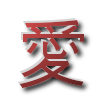A Review by Robert D. Wilson
Columbia University Press
ISBN 978-0-231-15647-9
©2011
Haiku before Haiku, Carter’s title for his new book, reminds me of Shakespeare's famous opening line of a soliloquy for the play Hamlet, “To be or not to be.” When many poets think of haiku, they think of Basho and refer to him as the father of haiku.
“Abroad or in Japan, mention of the word haiku brings to mind Matsuo Basho (1644-1994), the greatest master of that genre. However, the truth is that the haiku form -- in an earlier incarnation -- was already 500 years old when Basho began his career in the mid-seventeenth century. During those early times, the genre was referred to not as haiku but as hokku (initiating verse), reflecting its role as the first verse of a linked-verse sequence.”
Wrote Nijo Yoshimoto (1320–1388), “The first verse is of paramount importance. Nothing too ordinary will produce the right effect. The best hokku have a venerable air, and those that do not, usually seem too pedestrian. Past masters thought of the hokku as a matter of utmost importance; so much so should we in these latter days . . . A poor first verse can mar the effect of a whole 100-verse sequence. Rather than tossing something off, then, it is best to leave composition of the hokku to a poet of experience and skill.”
Frost melts ---
drenching fallen leaves
in sunlight.
Reizei Tamesuki (1263–1328)
Translated by Steven D. Carter
The above hokku can easily stand alone and conforms to the 5/7/5 metric schemata in the Yamato Japanese language. As Carter adeptly points out, Tamesuki used a “double entendre that joins opposites -- above and below, trees and ground, sunlight and rain, warm and cold, -- in a single realistic yet still elegant scene.”
It’s important to know when reading Professor Carter’s book Haiku Before Haiku that many of Basho’s most popular poems which he included in diaries such as Oku no Hosomichi (Narrow Road to The Deep North) were written prior to his trips as initiating verses for full linked verse sequences (renga). One example is:
How swift
The jumble of summer rains:
Mogami River.
Writes Carter, “Documents show that this verse, far from being written while the poet was still in the boat, was composed for a 36 verse sequence (kazen) held at the home of a certain Ichiei in the town of Oishida. And this is no isolated example; the same pattern applies to many hokku recorded in Basho’s travel records, which, while originating at specific gatherings, were later recontextualized in prose narratives. And there is even more to the story, for manuscript evidence reveals that the hokku composed at Oishida originally read differently:”
How refreshing
the jumble of summer rains:
Mogami River.
Let’s look at some other hokku written before Basho’s time.
What differentiates them from what Basho, Buson, or Issa wrote, which we today call haiku?
- They are activity-biased, not object-biased.
- Not a fragment but a complete thought.
- A seasonal reference expressed as a treatment of an idea
- Not composed in an “aha!” moment.
Day will dawn
And shall I ever see again
such an autumn moon?
Sogi
Of interest is that Sogi’s hokku is a direct reference to a waka by Fujiwara no Teika:
Day will dawn,
and we will pass beyond
the mid-point of fall.
But will the setting moon
be all that we lament?
Some more hokku written before Basho’s time:
Cry out, then, cry ---
crickets in the heavy dew
of Fukakusa
Musho
A reference to a waka by Sone no Yoshitada (fl. ca. 980-1000?)
Cry out, then, cry ---
crickets in your tangle
of mugwort timber!
The passing of autumn
is indeed so sad a time
The sun goes down ---
but evening light remains
in the leaves
Nijo Yoshimoto
Autumn of 1348
Deutzia in bloom:
even at midday, moonlight
beneath the trees
Fushiminomiya Sadafusa
March 1437
Not producing
even a mountain echo ---
cicada’s drone
Shinkei (1406-1475)
Here’s a sampling of hokku composed by Matsuo Basho, all of them the opening hokku for linked verse. Read these, then reread the above. Haiku Before Haiku?
In the cowshed,
mosquito voices, failing
Autumn wind.
July 1691
Moon viewing.
Not a handsome face
in the room.
August 1690
Fluttering gently
a fan rises into the air.
Pinnacles of cloud.
June 1694
Ah, the things
they call to mind!
Cherry blossoms.
February 1698
Matsuo Basho
*All translations by Steven D. Carter
States Professor Haruo Shirane, Columbia University, on the back cover of Haiku Before Haiku, ”’Haiku Before Haiku’ brings to the English-speaking audience for the first time selected seventeen syllable haiku composed by medieval renga poets prior to the appearance of the famed haiku master Matsuo Basho in the late seventeenth century.”
States Penny Harter, “A brilliant book.”

 Professor Steven D. Carter is Yamato Ichihashi Chair in Japanese History and Civilization at Stanford University.
Professor Steven D. Carter is Yamato Ichihashi Chair in Japanese History and Civilization at Stanford University.


